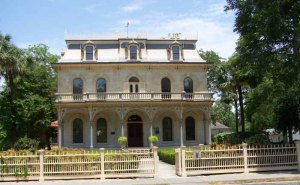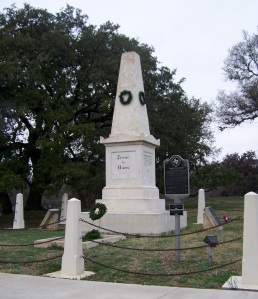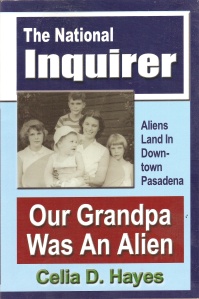
That was a concept that I was reminded of Sunday afternoon, as Blondie and I drove away from the King William historical district – those witty and cutting remarks that you only think of later; in the staircase, or as happed with us, after we merged into traffic from the onramp from Commerce Street.
Our trouble was not that we didn’t think of appropriately witty and cutting remarks at the time and place; it’s just that what we immediately thought of to say would have been rude, even slashingly cruel, and totally ruined the popular image of Southern (and Texan) courtesy and hospitality to guest, even clueless ones. I don’t know from how far out of town this family group came, who chose to wander around King William on a Sunday mid-day; their accents were non-specific American … but from what they did say – rather loudly – upon wandering into the parking area behind the Steves mansion, I would guess that They Are Not From Around Here.
I would also judge that their knowledge of local history was conspicuously lacking, which most immediately offended me, straight off – and might have led to me saying such cutting things, or delivering a furious parking-lot lecture of at least twenty minutes in length … but even Blondie was angry, and it was more to govern her tongue that I told her to just leave it, and drive away. Even if she rolled down the passenger window on the Montero as we backed out of the parking lot; no, neither of us delivered a parting shot.
The overheard remark which so raised our ire was – as this extended family wandered within earshot and regarded the outbuildings at the back of the Steves Homestead was, “That’s the slave quarters.”
The slave quarters.
Jesus jumping everlasting Key-rist on a pogo stick; it’s as if every big mansion south of the Mason-Dixon Line built before the mid-20th century had slave quarters as a matter of course.
Perhaps we should have said something, which is what we agreed on as soon as we were on the highway. I write my books to amuse and educate – and there went a chance to educate a party in the direst need of it that I ever saw in the flesh. Except that my own first remark would have been along the lines of, “I assume you must be a graduate of our finer public schools.” No, not a good start to a lecture on the history and background of the various families who established fine houses in King William … in the decade after the Civil War and well after slavery had been abolished. Lately I have begun to doubt any graduates of our finer public schools are acquainted with the details of abolitionist sentiment in Texas; or are even acquainted with the exact dates of the Civil War, any of the other nuances involving that war, or anything much to do with the peculiar institution itself, other than the immediately obvious.
So here was the thing – which I would have liked to have been calm enough to pass on to the family of visitors: the Steves Homestead was built in 1876 in a very showy French Second Empire style for one Edward Steves, whose family had originally settled in Comfort. Mr. Steves owned an extremely profitable lumber company, and the complex or buildings behind the house included an indoor pool, since Mrs. Steves loved swimming, a wash-house, to process laundry, a carriage house, and a small building which provided housing for the gardeners and the stable hand. Mr. Steves was prominent in city government during his life, and also in the many doings of the substantial German community, and contributed to the construction of the True to the Union monument in Comfort. In fact, two of the Unionists dead in the Nueces fight included Edward Steves’ brother and brother-in-law. So, no – the Steves and their friends and family were most emphatically not slave owners – and the casual assumption that they were struck us as insulting and ignorant in the extreme.

And that’s why we didn’t even begin to calm down until we got to the highway. Sigh. I missed a clear opportunity there to shed enlightenment. But I just didn’t think I could have held on to my temper. Which is why I could never have been an academic – I just don’t have that kind of patience.






Recent Comments